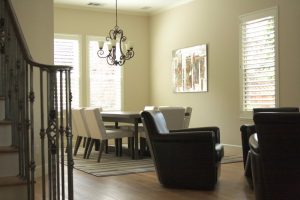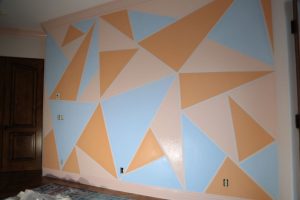
The Advantages of Interior Painting for Historical Homes
Introduction: Preserving Historical Homes With Interior Painting Historical homes are prized for their unique architectural features and cultural significance. They often have distinctive interior design elements, such as ornate plasterwork, intricate woodwork, and vintage wallpaper. However, over time, these features can become worn, faded, or damaged, compromising the home’s original beauty and character. That’s where interior painting comes in. By carefully choosing colors, finishes, and techniques, homeowners can refresh and rejuvenate their historical homes while still preserving their original charm. Interior painting is not only a practical solution for historical homes but also a valuable investment. Properly painted and maintained interior walls can help protect the structure from moisture, mold, and other types of damage. Moreover, a well-painted interior can enhance the home’s value and appeal, making it more attractive to potential buyers. While it’s essential to preserve the original architecture and design of historical homes, it’s also essential to ensure that the space is functional and comfortable for modern living. Interior painting can help achieve that balance by bringing in modern colors and finishes that complement the historical features of the home. In this article, we will explore the advantages of interior painting for historical homes and why it’s worth considering for your next home improvement project. Enhancing The Historical Charm: Highlighting Architectural Details Interior painting can enhance the historical charm of a home by highlighting its unique architectural details. Historical homes often feature ornate moldings, trim work, and other decorative elements that can be easily overlooked. By painting these details in a contrasting color or by using a technique such as antiquing, these features can be brought to the forefront and celebrated. Another way to enhance the historical charm of a home through interior painting is by choosing colors that are historically accurate or inspired by the time period in which the home was built. This not only adds authenticity but also creates a cohesive design throughout the home. For example, if the home was built in the Victorian era, choosing rich jewel tones and intricate patterns can help to create a sense of opulence and grandeur. In addition to enhancing the historical charm of a home, interior painting can also help to preserve it. Historical homes may have unique building materials and techniques that require specific maintenance and upkeep. Properly painted walls and ceilings can help to protect these materials from deterioration and damage caused by moisture, pests, and other environmental factors. Interior painting can also be used to update historical homes to meet modern needs and lifestyles. For example, a historical home may have small rooms or low ceilings that can make the space feel cramped or dark. By using lighter colors and finishes, as well as strategically placed accent walls or murals, the space can feel more open and inviting. Restoring Original Finishes: Maintaining Historical Integrity Historical homes often have unique and intricate design elements that give them character and charm. However, over time, these elements can become worn, faded, or damaged. When restoring a historical home, it’s important to maintain its original finishes and architectural details to preserve its historical integrity. Interior painting can play a crucial role in this process by helping to restore and highlight these features. Professional interior painters who specialize in historical homes are trained to identify the original finishes and colors used in a particular time period. They can replicate these colors and finishes to help restore the historical integrity of the home. In addition, they can help identify any damage or wear on the architectural details, such as crown molding or wainscoting, and repair or restore them as needed. One of the advantages of interior painting for historical homes is that it can help enhance the historical charm of the home. With the right colors and finishes, interior painting can help highlight the unique architectural features of the home, such as ornate moldings or intricate ceiling designs. This can help to create a cohesive and visually appealing space that stays true to the home’s historical roots. Another advantage of interior painting for historical homes is that it can help protect and preserve the home’s original finishes. With the proper preparation and use of high-quality paints and finishes, interior painting can help protect surfaces from wear, fading, and damage. This can help prolong the life of the home’s historical features and maintain its original beauty for years to come. Updating For Modern Comforts: Making Historical Homes Livable While preserving historical integrity is important, it’s also essential to make these homes livable for modern families. Interior painting can help in this regard, as it allows for updates to be made without compromising the historical integrity of the home. For example, a historical home may have dark, outdated paint colors that make the space feel closed off and unwelcoming. By repainting with lighter, brighter colors, the space can feel more open and inviting. Additionally, historical homes often have smaller rooms and limited natural light, which can make the space feel cramped and gloomy. Painting with light, reflective colors can help brighten up the space and make it feel larger and more welcoming. Another way to update a historical home while maintaining its integrity is by using paint to highlight and update key features. For example, a historical home may have beautiful trim or molding that has been painted over multiple times, obscuring its original details. By stripping away the layers of paint and repainting the trim with a fresh coat of paint, the original details can be restored and highlighted, enhancing the historical charm of the home. Lastly, updating a historical home with modern comforts can also involve repainting to incorporate the latest design trends. For instance, adding an accent wall with a bold, modern color can help give a historical space a contemporary twist while still maintaining its traditional charm. Protecting Against Damage: Preserving Historical Homes For The Future Historical homes are often treasured for their unique architecture and design elements. These homes can be a link to the

